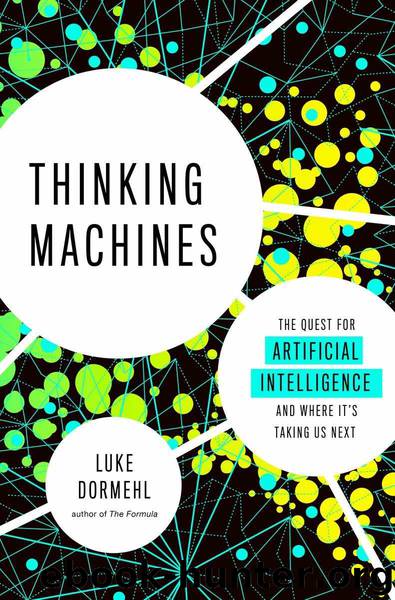Thinking Machines: The Quest for Artificial Intelligence--and Where It's Taking Us Next by Luke Dormehl

Author:Luke Dormehl [Dormehl, Luke]
Language: eng
Format: azw3
Publisher: Penguin Publishing Group
Published: 2017-03-07T05:00:00+00:00
The Positives of Techno-Replacement
In 1589, the British inventor William Lee invented a stocking frame knitting machine. According to legend, he did this because the woman he was wooing showed more interest in knitting than she did in him. (Which, of course, begs the question of what kind of an outcome a person hopes for when they try to woo a beloved by putting them out of business?) Looking to protect his invention, Lee traveled to London and, at considerable expense to himself, rented a building with the aim of showing his machine to Queen Elizabeth I. The Queen turned up to the demonstration but refused to grant Lee the patent he was requesting. The words she used to explain her decision have gone down in history: “Thou aimest high, Master Lee. Consider thou what the invention could do to my poor subjects. It would assuredly bring to them ruin by depriving them of employment, thus making them beggars.”
At the time, England had powerful guilds, which eventually had the effect of driving William Lee from the country. As the historian Hermann Kellenbenz has observed, these guilds “defended the interests of their members against outsiders, and these included the inventors who, with their new equipment and techniques, threatened to disturb their members’ economic status.”
It is highly unlikely that any government, regulatory body or (especially) venture capitalist firm in the UK or United States would act in the same manner today. A person applying for a patent will be scrutinized on the originality of his or her idea, not on the long-term impact it is likely to have on society.
However, despite a lack of people willing to behave as Queen Elizabeth I did, it may be the case that the long-term implications of AI are not as bleak for employment as some would have you believe. Yes, Artificial Intelligence’s risk to our livelihood is one of the most pressing issues we need to examine, but there are also plenty of reasons to be optimistic.
Let’s start with what may sound a controversial idea: that there is a moral imperative for getting rid of certain types of work.
To give an example most people can surely agree on, there were more than 1,000 chimney sweeps employed in Victorian London. Unlike the romantic picture presented in movies like Disney’s Mary Poppins, chimney sweeps endured a brutal existence. Children were often used as sweeps because their small frames allowed them to go down the narrowest chimney stacks, where adults could not reach. Child chimney sweeps started working as young as three years old. Since most would literally outgrow the job by nine or ten, some bosses underfed their employees so that they could continue fitting down chimneys. Death could result from chimney sweeps falling down chimney stacks, or getting stuck in them without anyone knowing what had happened—leading to death from exposure, smoke inhalation or even burning. Many children suffered irreversible lung damage from constantly breathing in soot.
Regardless of our views on youth unemployment, not too many would be in favor of bringing back child chimney sweeps today.
Download
This site does not store any files on its server. We only index and link to content provided by other sites. Please contact the content providers to delete copyright contents if any and email us, we'll remove relevant links or contents immediately.
Enlightenment Now: The Case for Reason, Science, Humanism, and Progress by Steven Pinker(7273)
A Journey Through Charms and Defence Against the Dark Arts (Harry Potter: A Journey Through…) by Pottermore Publishing(4789)
The Immortal Life of Henrietta Lacks by Rebecca Skloot(4550)
A Journey Through Divination and Astronomy by Publishing Pottermore(4363)
Elon Musk by Ashlee Vance(4084)
Origin Story: A Big History of Everything by David Christian(3666)
COSMOS by Carl Sagan(3589)
Alchemy and Alchemists by C. J. S. Thompson(3481)
Bad Pharma by Ben Goldacre(3396)
Enlightenment Now by Steven Pinker(3349)
Shadow of Night by Deborah Harkness(3326)
Inferior by Angela Saini(3293)
A Mind For Numbers: How to Excel at Math and Science (Even If You Flunked Algebra) by Barbara Oakley(3256)
Origin Story by David Christian(3170)
The Code Book by Simon Singh(3138)
Signature in the Cell: DNA and the Evidence for Intelligent Design by Stephen C. Meyer(3098)
The Elements by Theodore Gray(3026)
A Brief History of Time by Stephen Hawking(2992)
A Journey Through Potions and Herbology (A Journey Through…) by Pottermore Publishing(2837)
